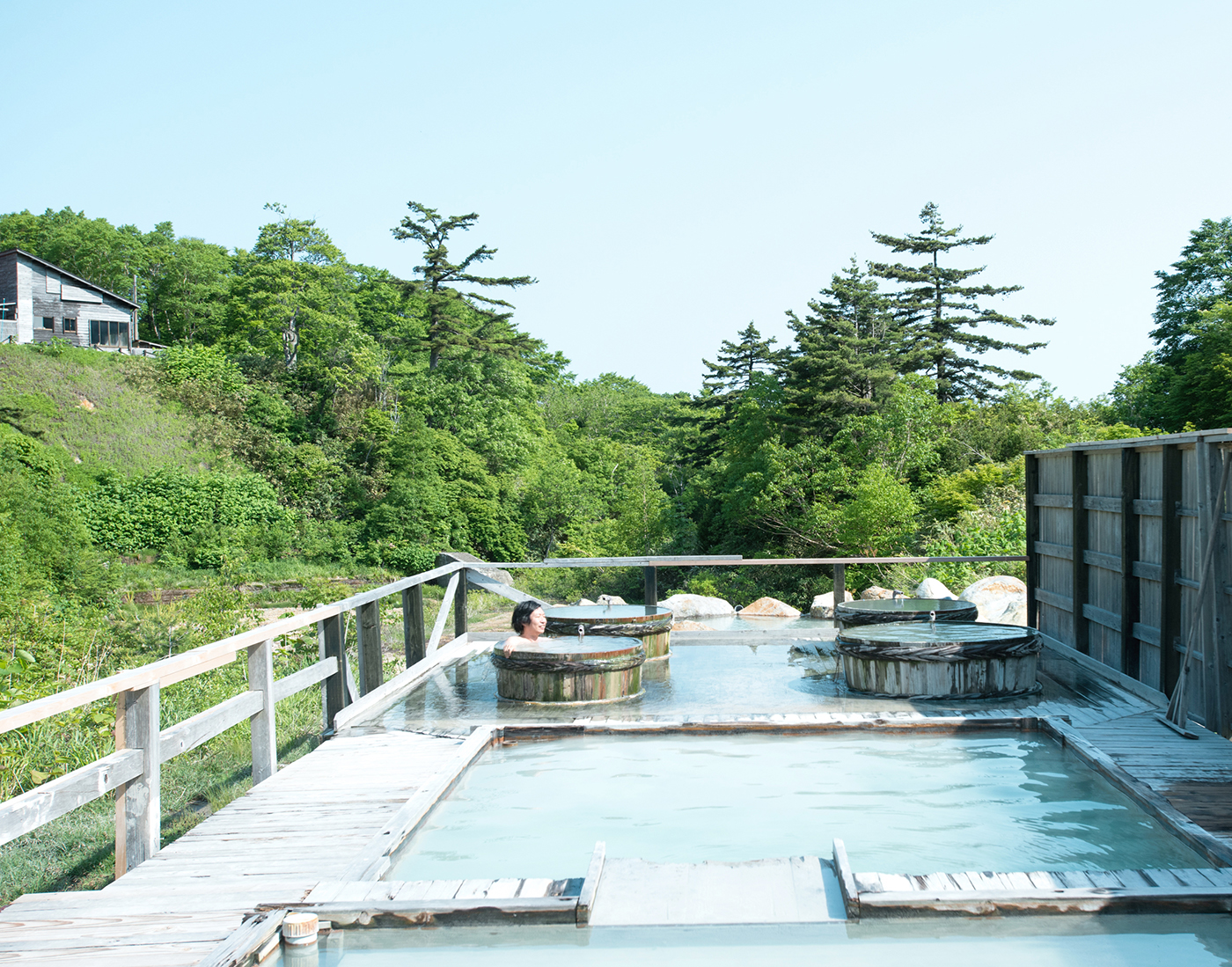

Akita Prefecture has around 120 “onsen” (hot spring) locations, with 626 individual hot spring sources (Ministry of the Environment, Nature Conservation Bureau Survey 2015). Some of these hot springs flow down as waterfalls. We’ve heard that you can make hot spring water well up just by digging a hole in the dry riverbed. You could describe Akita’s “onsen” as examples of “extreme nature”. Going to visit these places isn’t just about relaxation and feeling good, it’s a powerful, dramatic experience as well!
Atsushi Takeuchi, editor and writer.
Lives in Osaka. Magazine, book and free newspaper editor. Belongs to Re:S.
Photography: Ryumon Kagioka
To begin with, we travel to Kazuno in Akita and then onto Hachimantai, where Fukenoyu Onsen is located. Hachimantai spreads out along the border of northeast Akita and Iwate. It is a volcanic region, designated as a national park. On the Akita side of the border here there is a group of different sizes of onsen, large and small, all dotted around in a “hot line” of hot springs: Yuze, Zenikawa, Shibari, Goshogake, Tamagawa, Obuka, and Fukenoyu.
We drive out from Hanawa in Kazuno, heading south along the national highway, then exit on to the “Hachimantai Aspite Line” (prefectural road), and arrive at Fukenoyu Onsen after about 30 minutes. It’s quite chilly when we get out of the car. Fukenoyu Onsen is actually 1,100m above sea level although you don’t notice this because the road is so well-maintained and pleasant to drive on. I realize that without knowing it, we’ve actually climbed up pretty high.
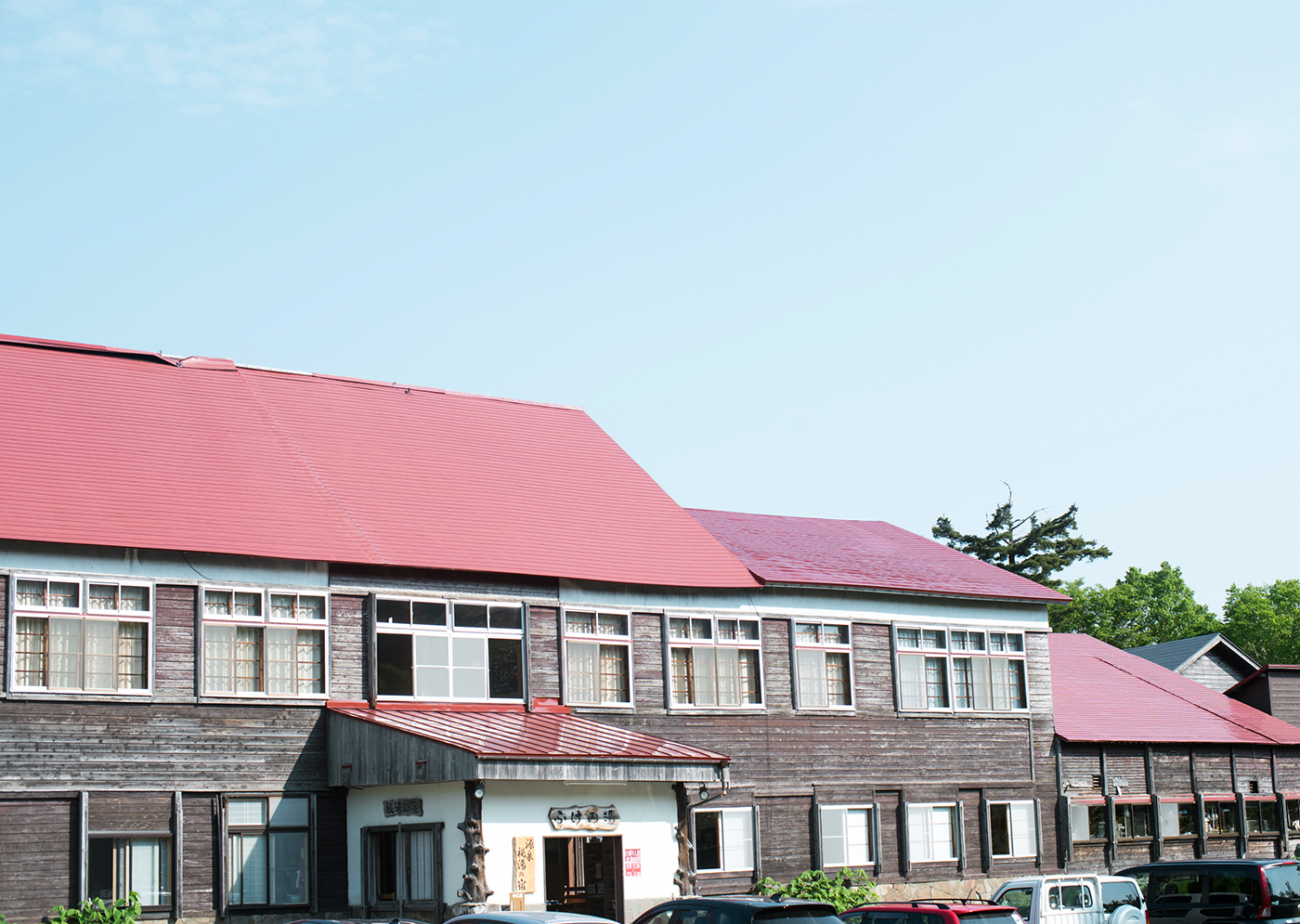
There is only one guesthouse in Fukenoyu. It is a wooden structure, like a mountain lodge. It has indoor baths (“uchiyu”), outdoor baths (“rotenburo”), and then about a 100m walk away from the hotel there is a rustic open-air baths (“yatenburo”). This “yatenburo” is what we’re here for. But, for your own safety, you’re not allowed to take a bath here after 6PM even if you are a hotel guest. You don’t have to stay the night here, you can also come here on a day trip if you prefer. When we passed through and asked what the ‘yatenburo’ was, we were told, “it’s a kind of ‘onsen’ like you’ve never been in before”. So what on earth is it?
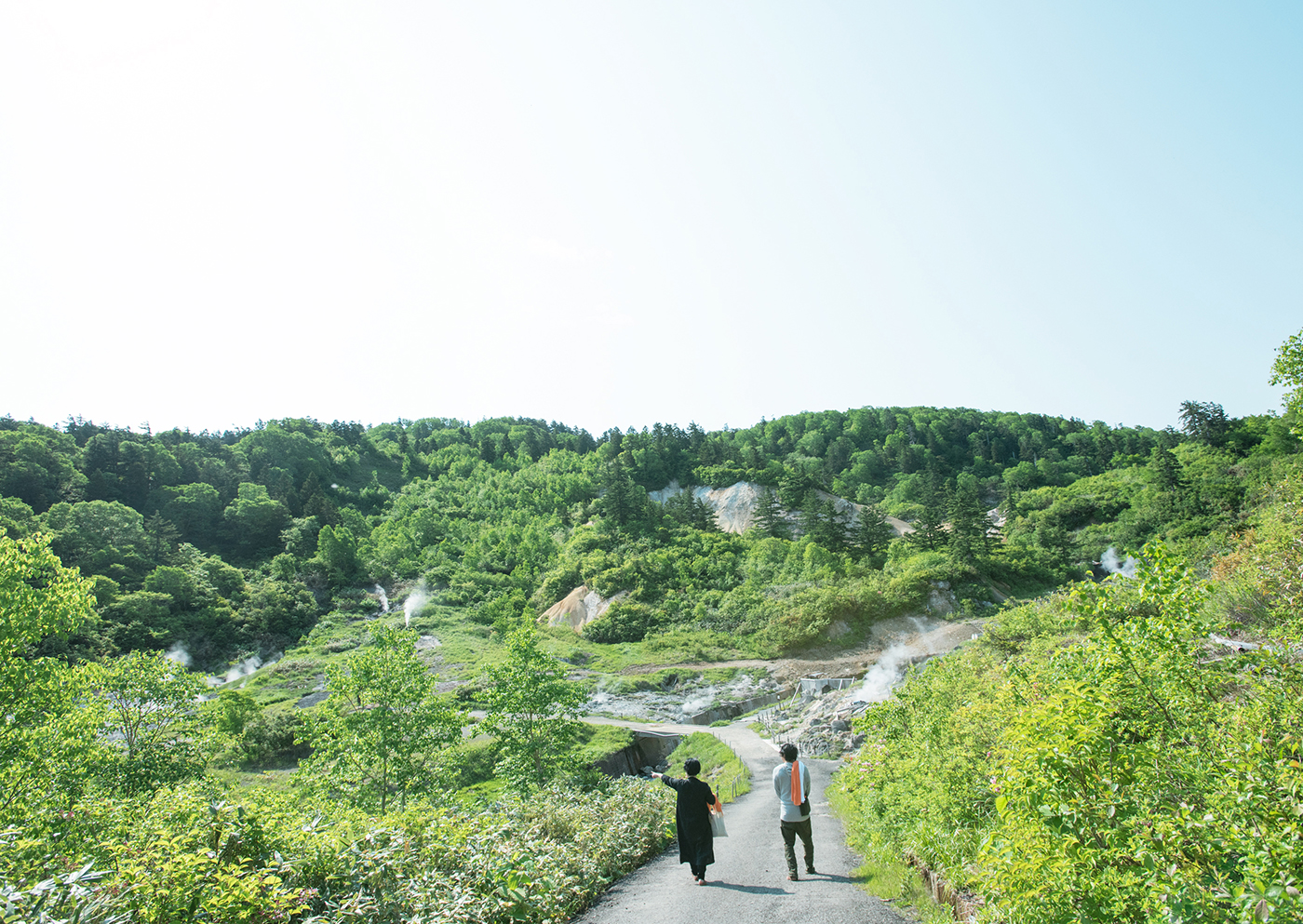
I get my bath things ready and then head off to the “yatenburo”. As I walk down the slope in front of the hotel, I get my first proper look at the rustic bath.
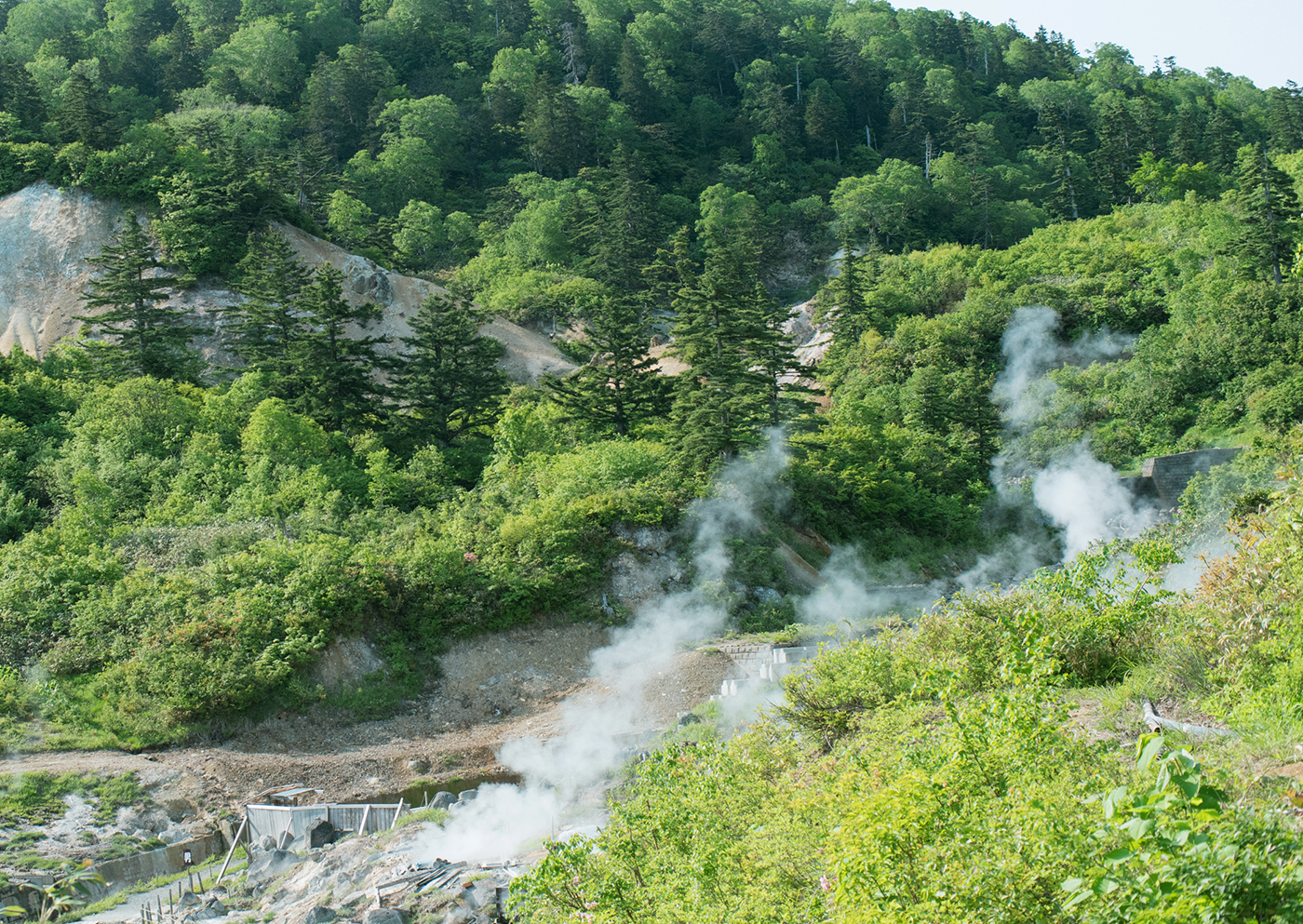
There is a natural depression in the ground, with plumes of smoke rising up here and there on the slopes around the pool. The surface of the ground appears white and red by turns. The hot water is completely yellow as it bubbles up in fountains.
You can imagine this representation of magnificent nature as a still life picture. However, in this picture the landscape is continually shifting and moving. If you think about it, this is a view of the very essence of nature in all its vigor. There is nothing uniform or regular about it, and I can’t help feeling a thrill of exhilaration as I look at it. It’s like a hot spring laboratory or Nature’s own hot spring theme park.
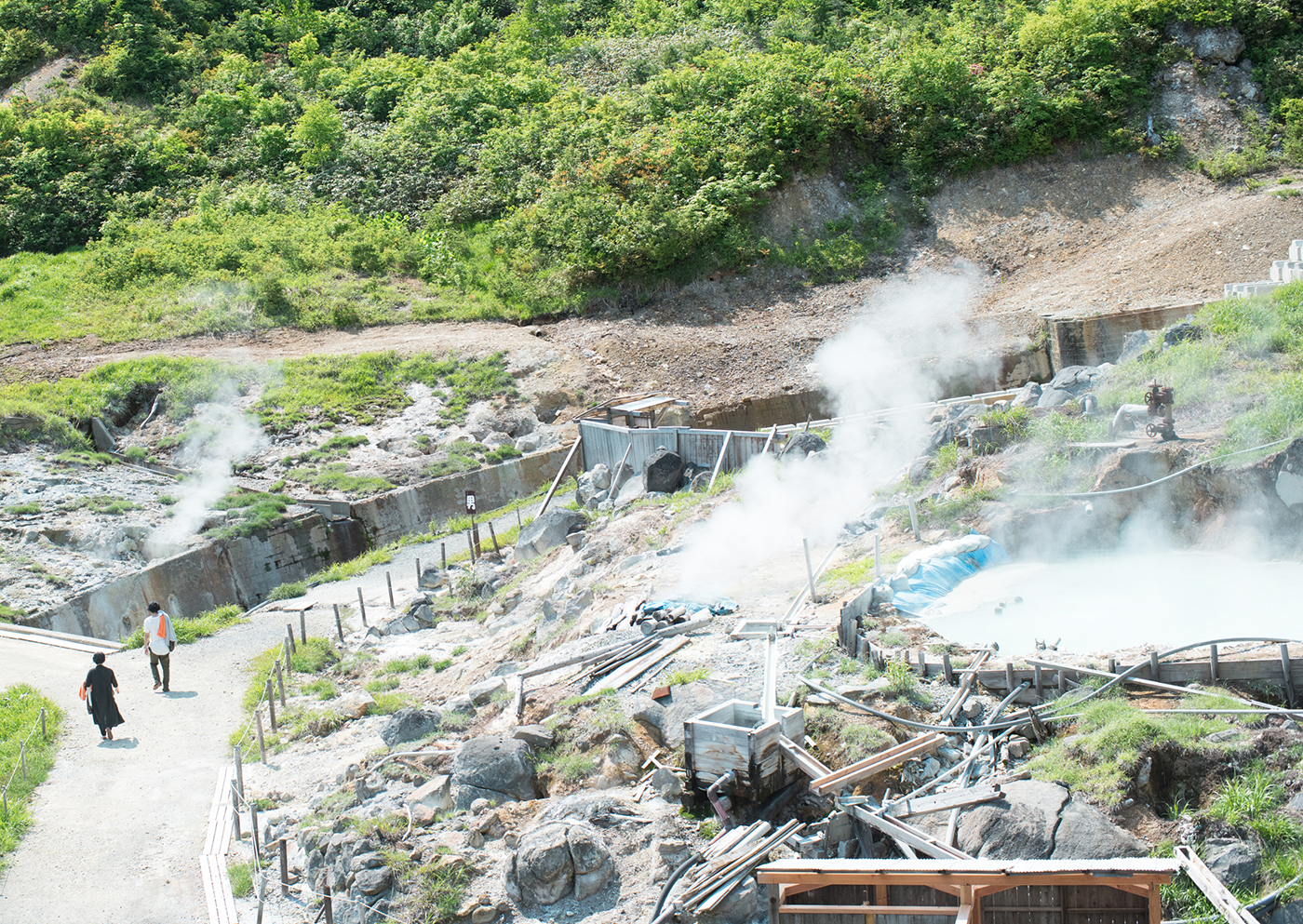
Nature here is wild and uninhibited. A wooden conduit guides the hot water into the bath tub that has been constructed here. There is a simple changing hut at the side. There are no signs, just a single sheet of paper which reads “Men” and “Women” stuck on the side of the hut to remind us that this is a bathing facility.
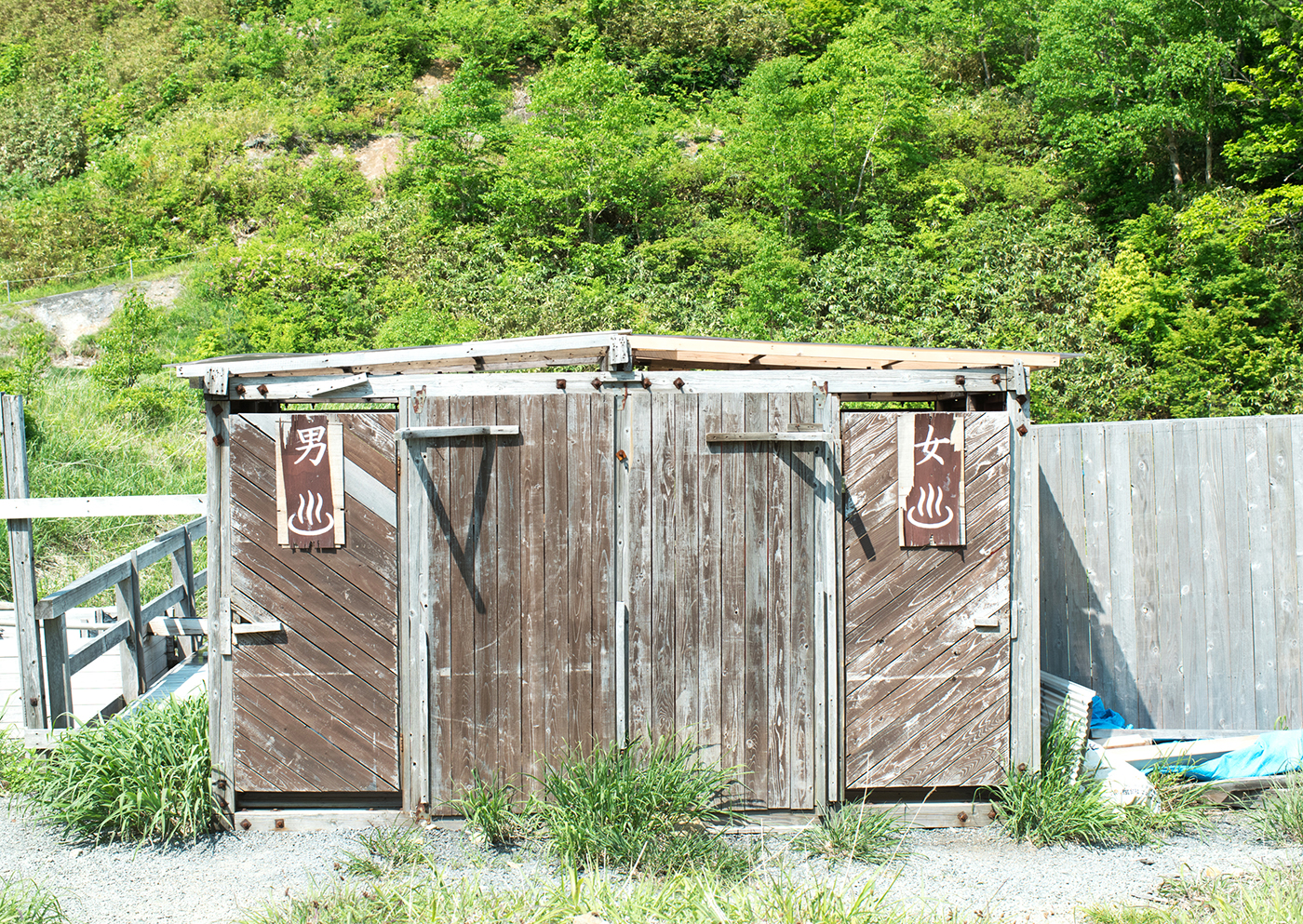
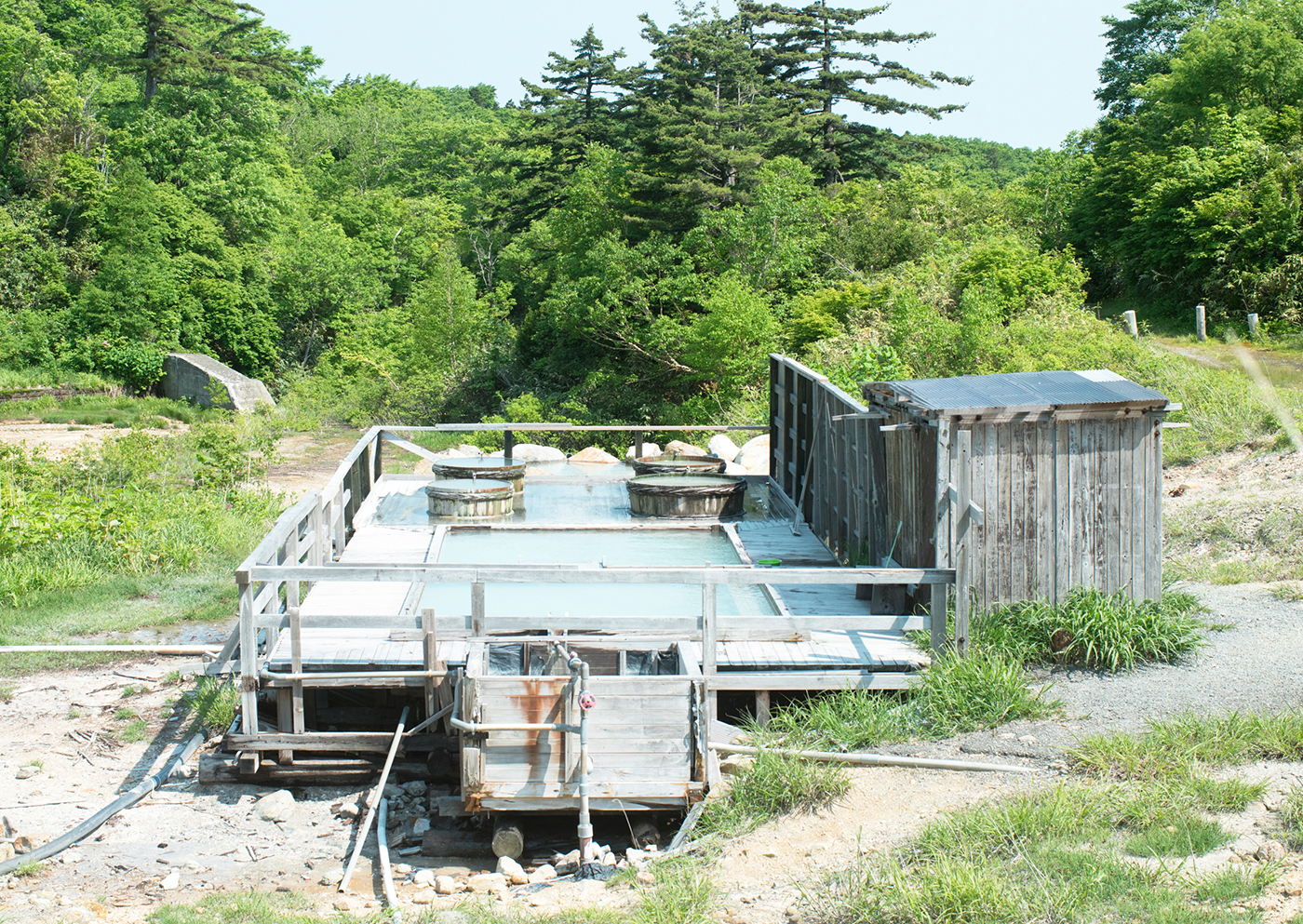
The dressing room has a men’s and women’s area, but the main bathtub itself is mixed bathing.
I quickly take off my clothes and plunge into the water. In spite of the tingling pungency of the sulfur spring water, the temperature is amazing. It’s just right. The landscape here is wild. I was totally distracted by my initial impressions, but once I’m in the bath and have relaxed a bit, I begin to notice the way in which Nature is being tamed and restrained in this place. As I soak in the hot spring water I realize, “So this is what Fukenoyu is all about!”
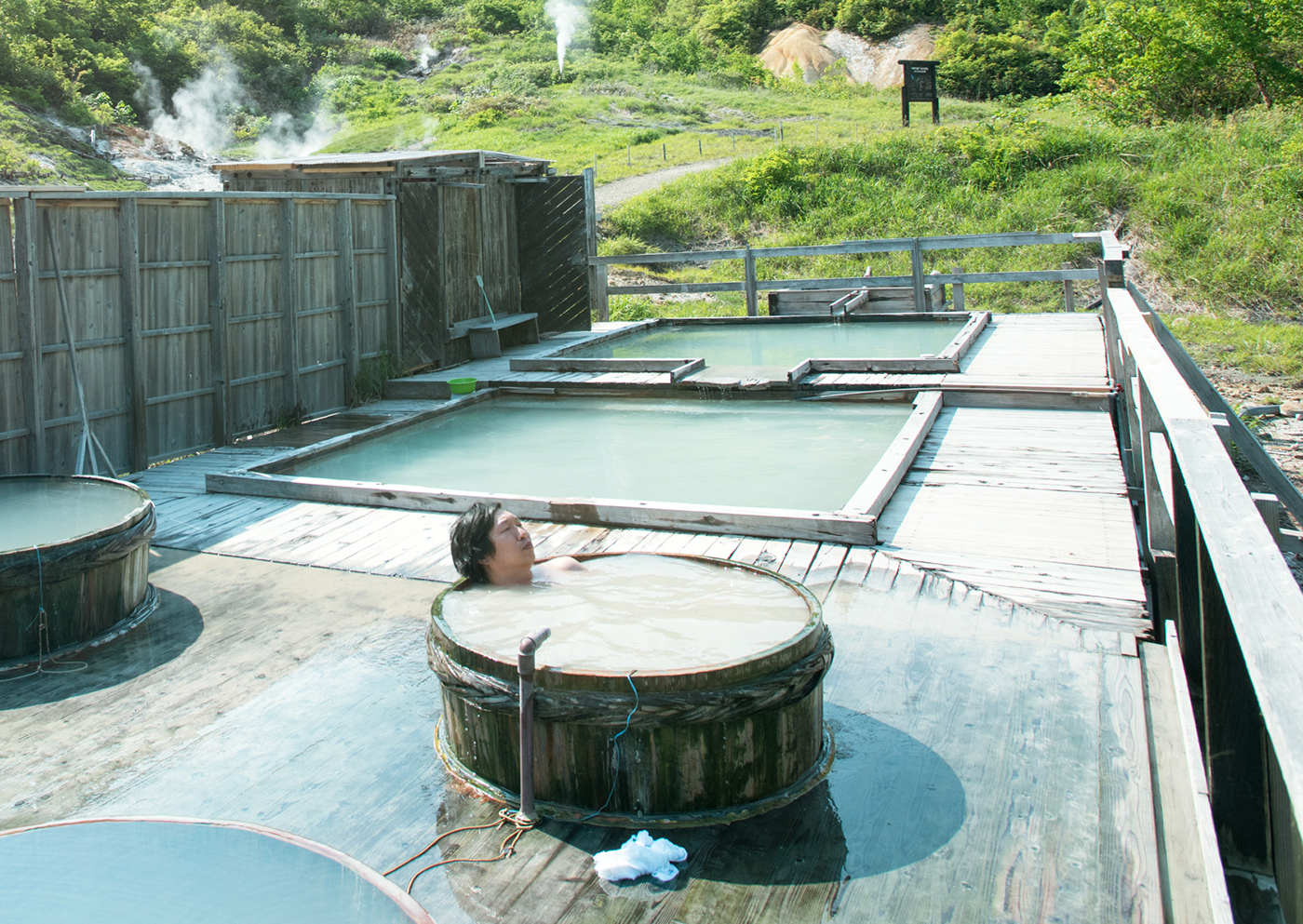
The area around here is called “Chisan no Mori” (Conservation Forest). The land has been devastated by volcanic activity, so a range of different forest conservation initiatives are continually underway in the vicinity. Hillside work and revetment activity is carried out to stabilize and protect the mountain slopes, and to shore up and preserve the banks of the mountain streams. This is more than just a “yatenburo” for bathing in, this is actually the front line in Man’s effort to tame and control the might of Nature.
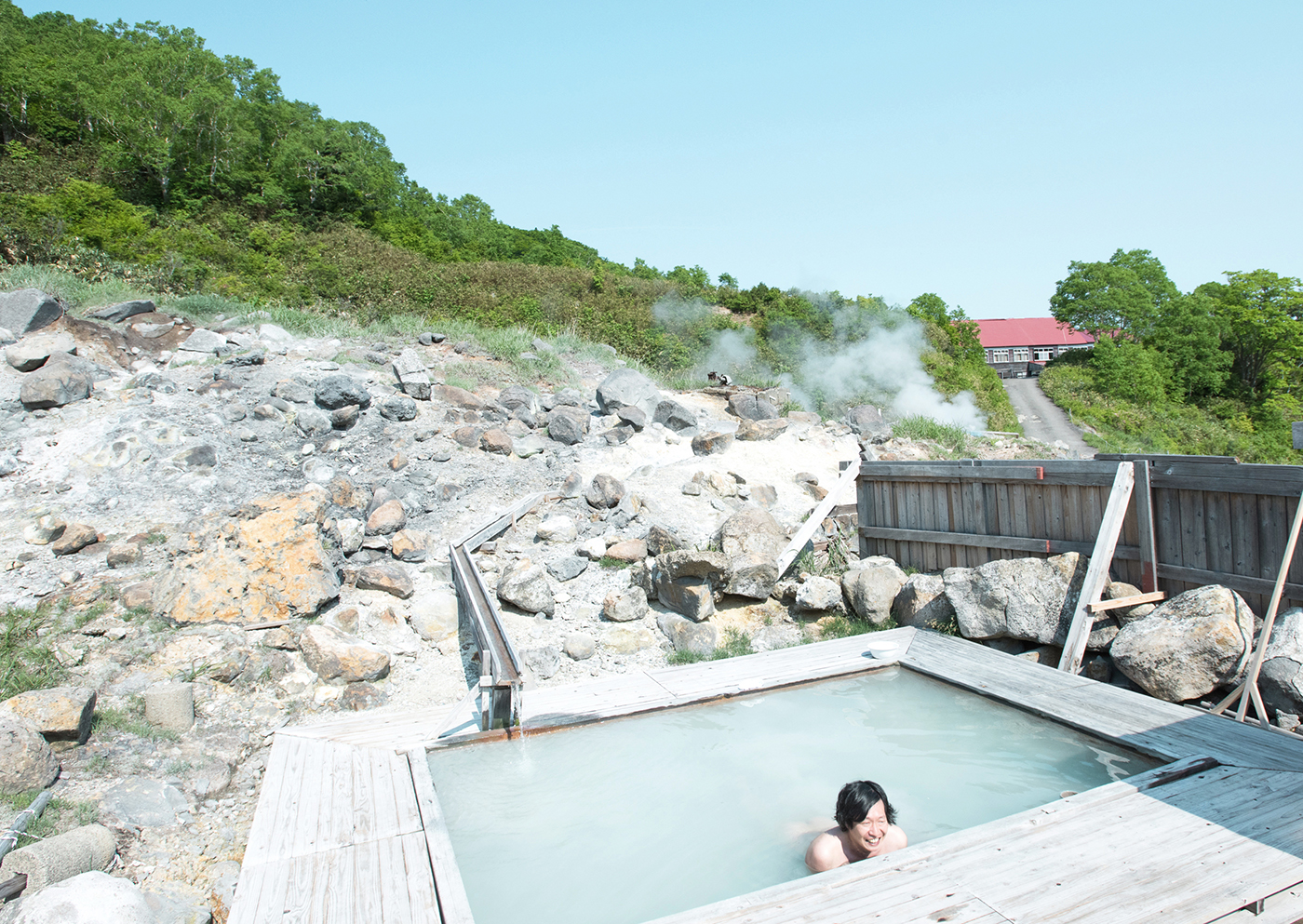
There are also some separate baths for men and women.
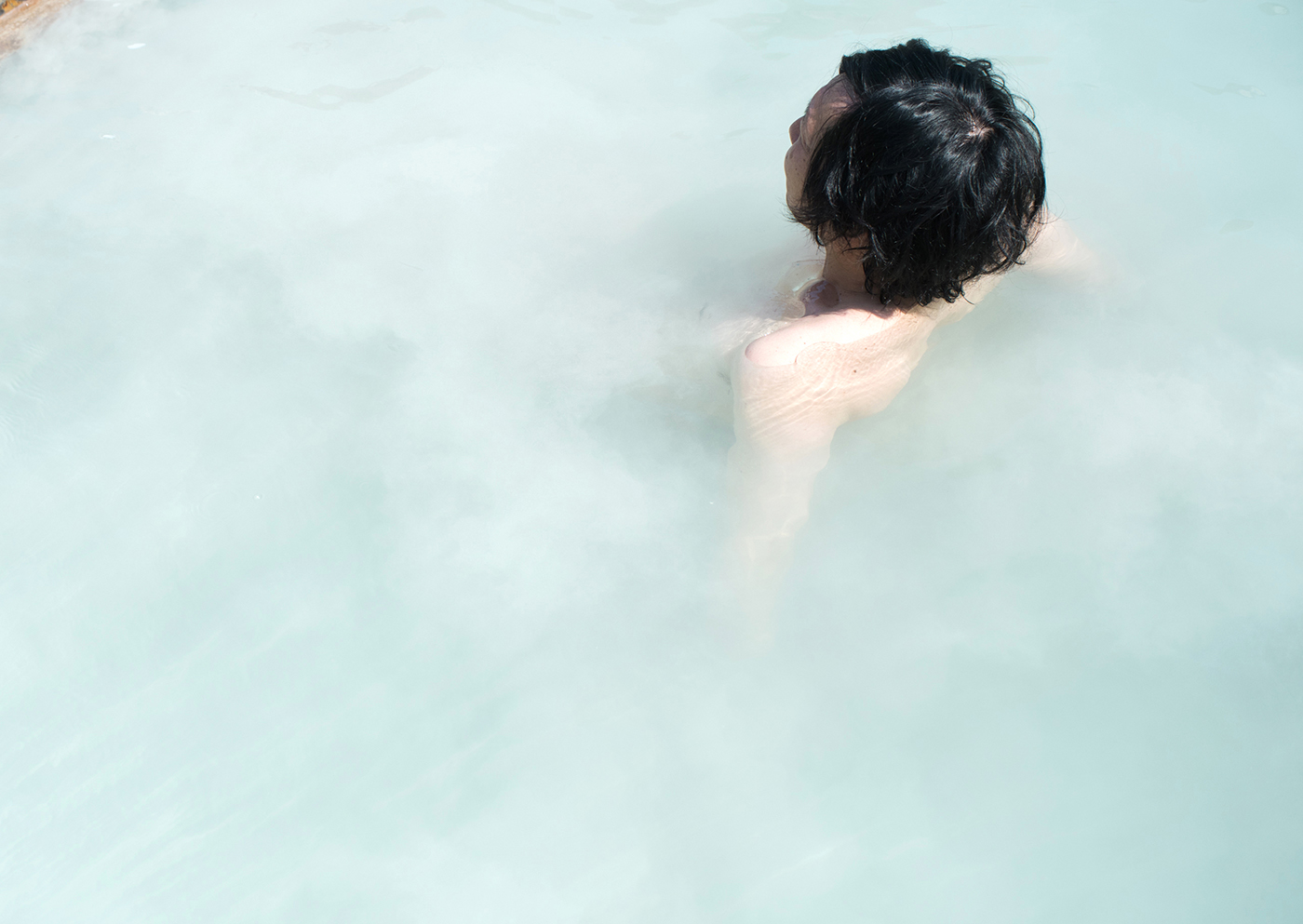
One Fukenoyu “yatenburo” experience I really want to try is the ondol. It’s like a so-called “ganban yoku” (bedrock bath). You lie down on ground which is warmed by geothermal heat, absorbing the heat and power of the hot springs below. You could say this is an original, elemental hot spring.
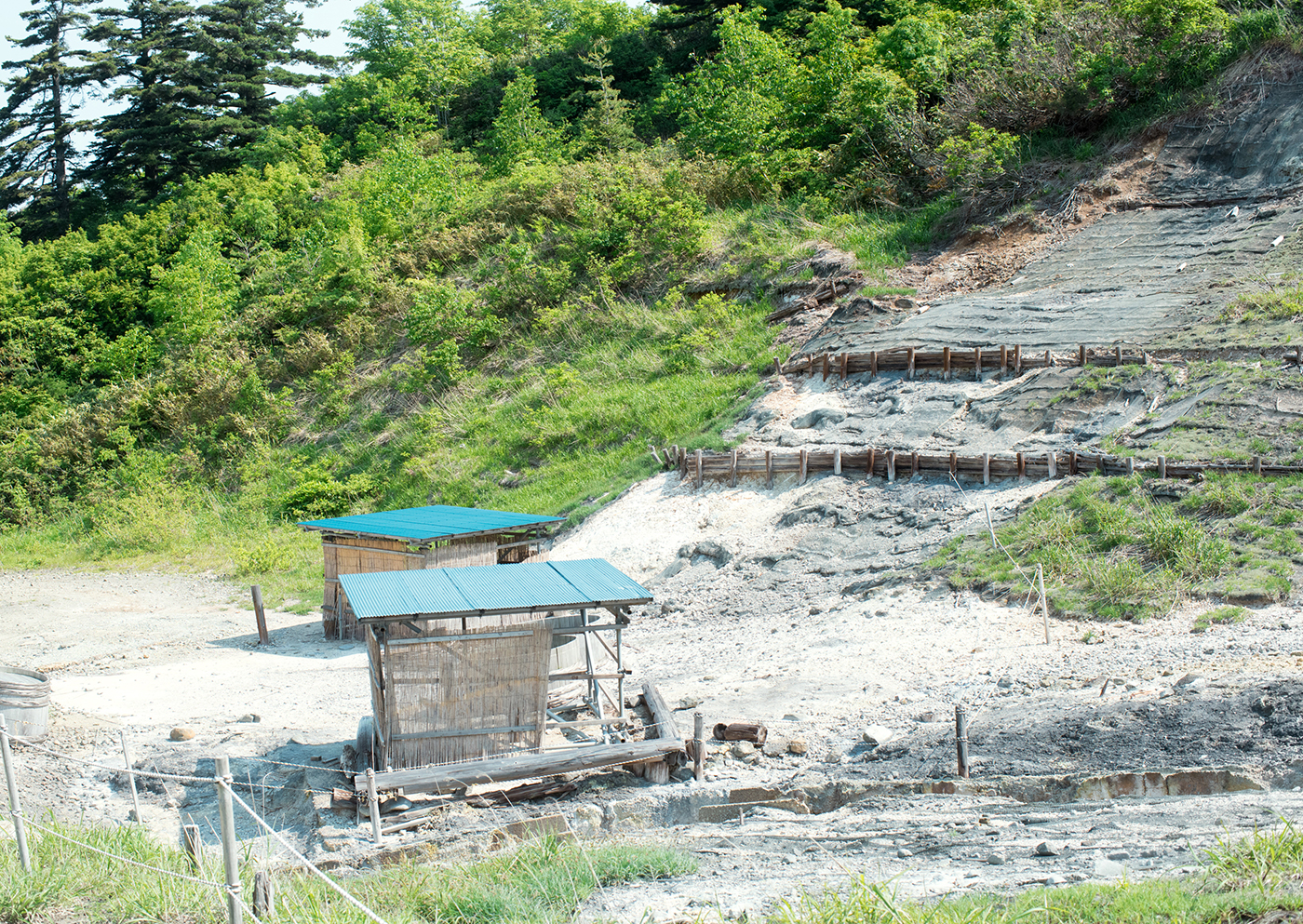
Yoshiharu Tsuge, the charismatic and widely-acclaimed manga cartoonist, traveled around the hot springs and health resorts of Tohoku in the 1960s. He stopped off in Fukenoyu and wrote a short comic book here called “Ondol Hut”. In those days, roads such as the “Aspite Line” had not been properly developed, so he ended up having to walk up the climbing path to the hot spring area. Tsuge didn’t mince his words when he got here. His candid view was that this place was like “the end of the road at the end of the world.”
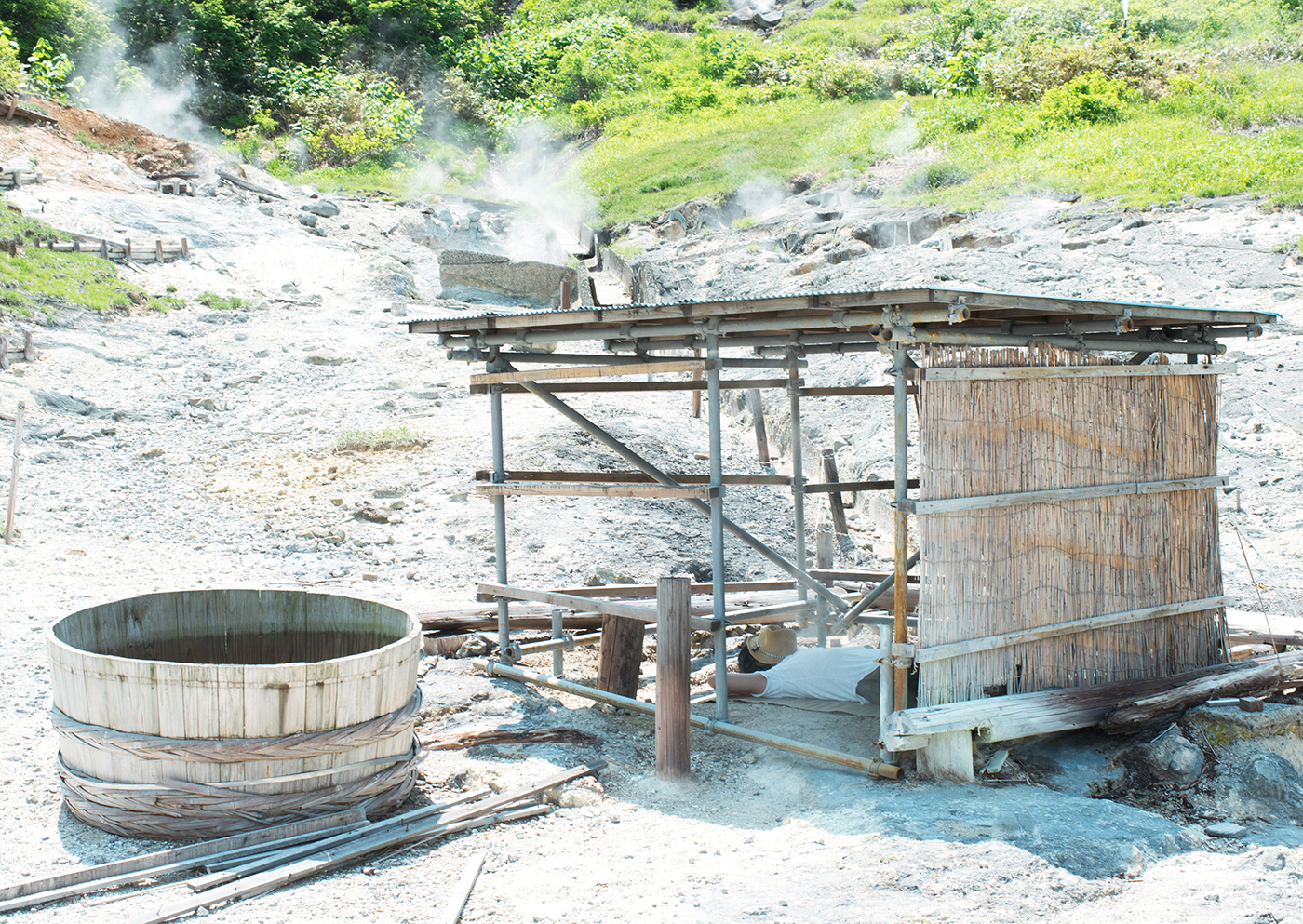
These days the Fukenoyu “ondol” is a group of simple huts with just an awning over the roof. You lie down on the floor on straw mats laid out inside. The huts are in an area with steam rising directly up from the ground, so you have to be careful where you put your head to make sure you don’t choke on the sulfur smells. I guess I should have tried to relax or take a nap, sprawled out on the ground in the middle of Nature. But I was too excited to relax and came out after just five minutes. If I had taken a manga book in there, I could actually have had quite a leisurely time in there, I’m sure of it.
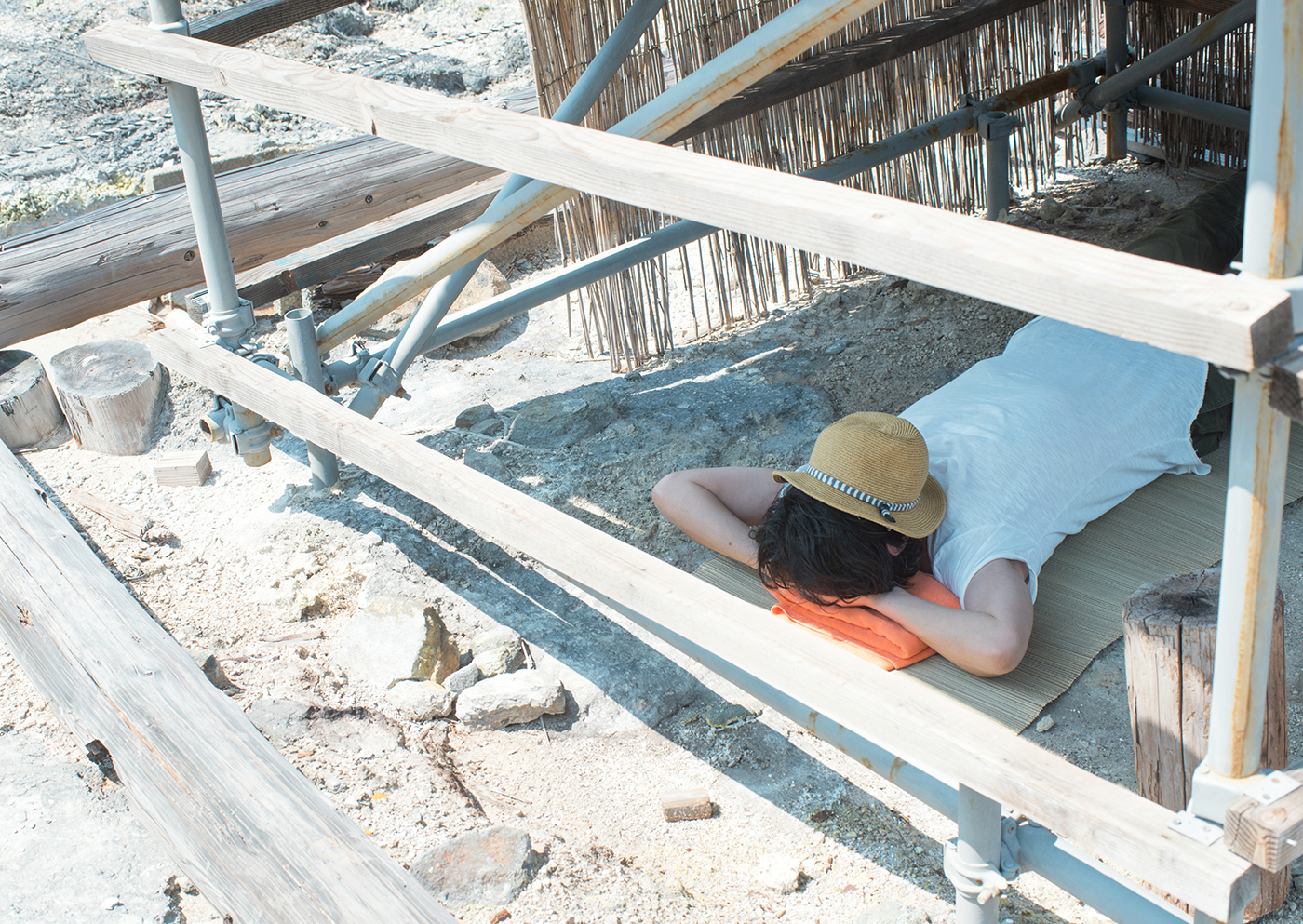
This place is a continual struggle between Man and Nature. My own view is that Nature is winning 7-3 here. Nature here is all powerful. When you are immersed in the “onsen,” totally naked with plumes of smoke rising in front of you, and you touch the warm ground, you suddenly get the urge to smile. You could say that you are “fully exposed to the whims of Nature.” It might sound like a cheesy advertising slogan, but in these hot springs your imagination knows no bounds: you are here in Fukenoyu, in Hachimantai, in the Ou Mountains, the Japanese Archipelago, and the world itself.
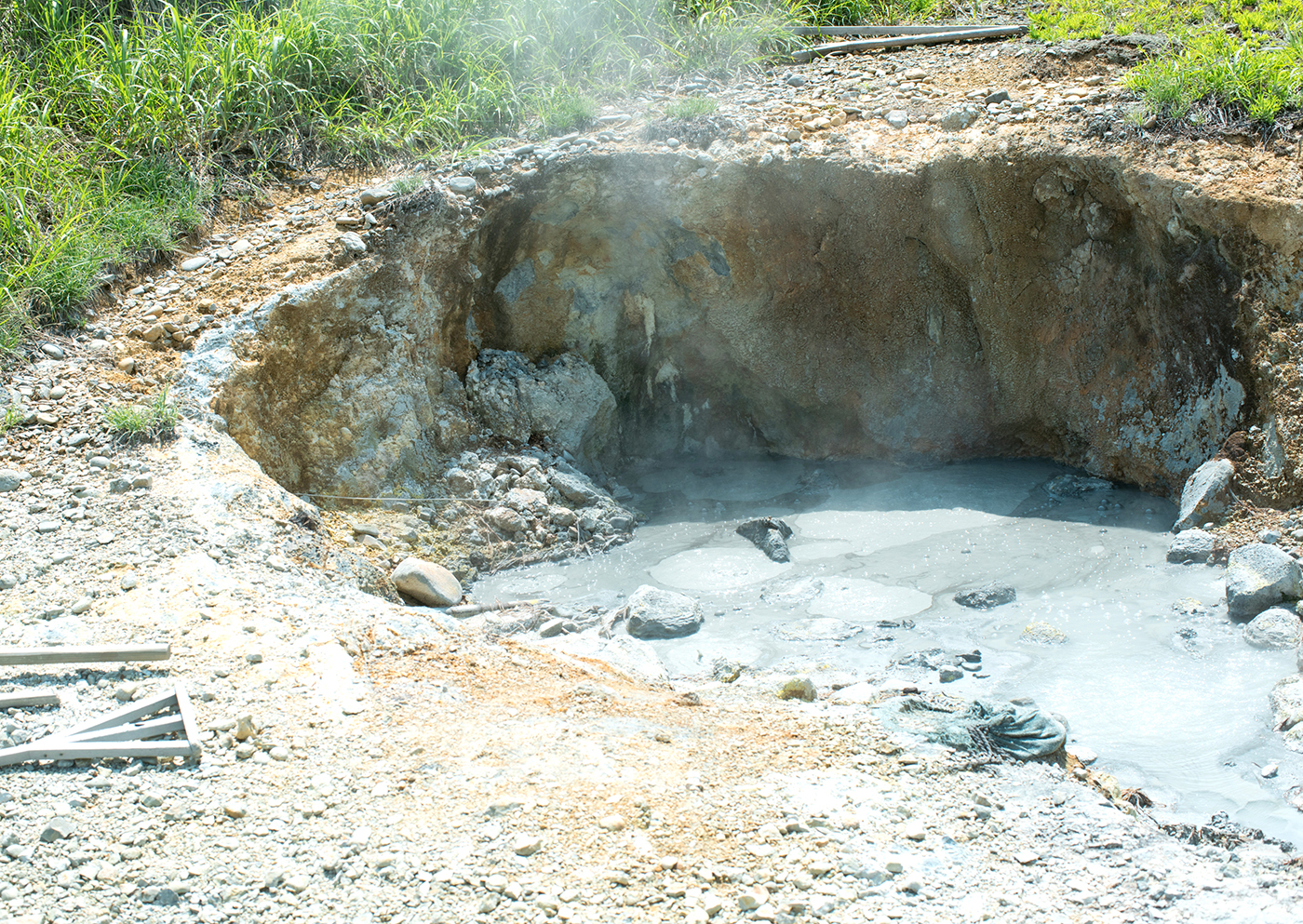
I picture frictional heat being generated by the subduction of the Pacific Plate at the Japan Trench in the Pacific Ocean, with the force of planet Earth creating magma and forming volcanos in a line down the center of the Tohoku region. I imagine that I’m now experiencing the benefits of this process immersed here in the “yatenburo” at Fukenoyu. At this moment, this doesn’t seem such a far-fetched idea. I feel supremely at ease, with thoughts of this immense landscape floating about in my head.
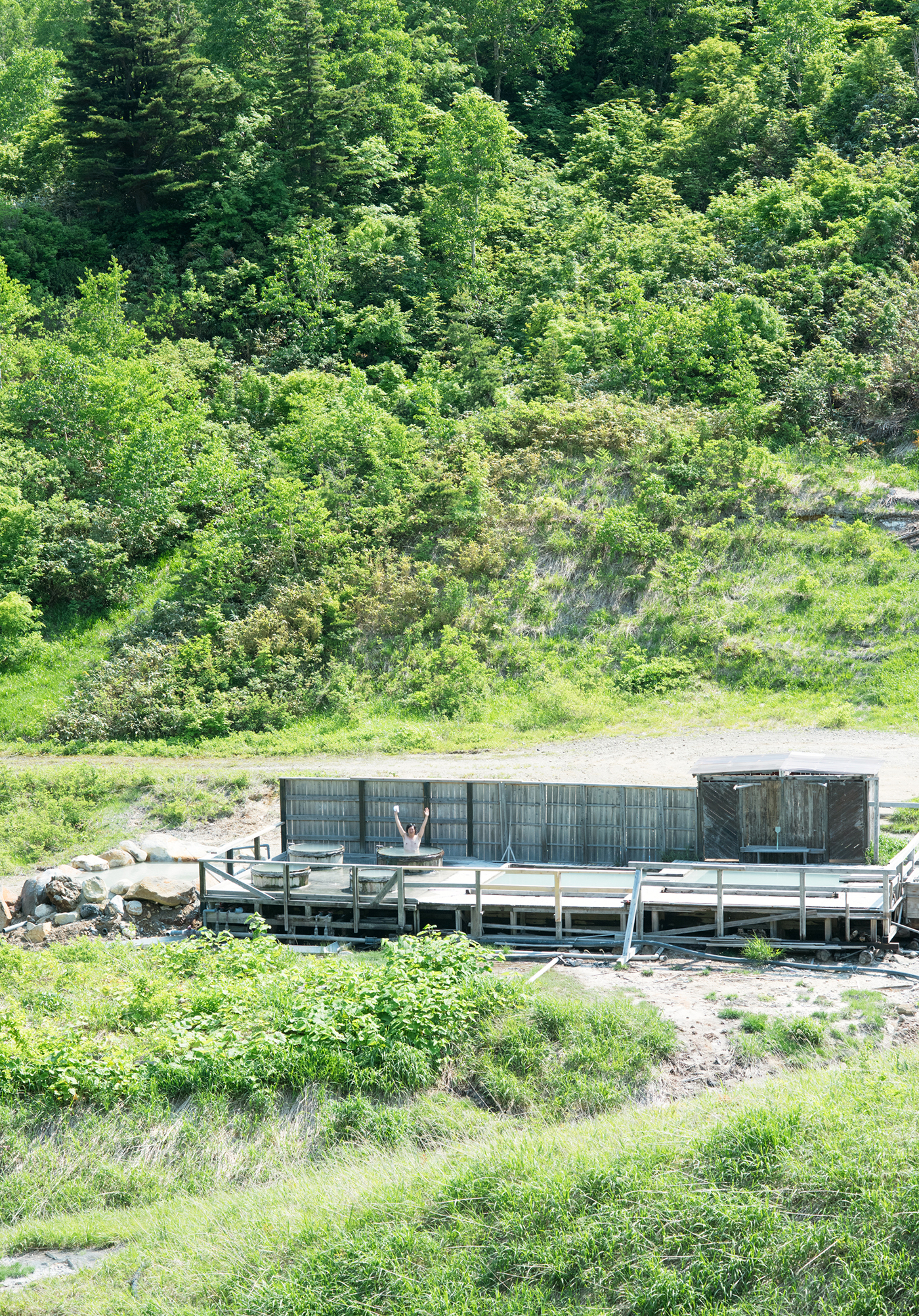
I’m relaxing and making the most of the “yatenburo” when I find out the manageress will be back soon. In our next post, we will talk to her about Fukenoyu Onsen and its history.
2.Human drama in a natural setting: Fukenoyu’s secluded hot springs




